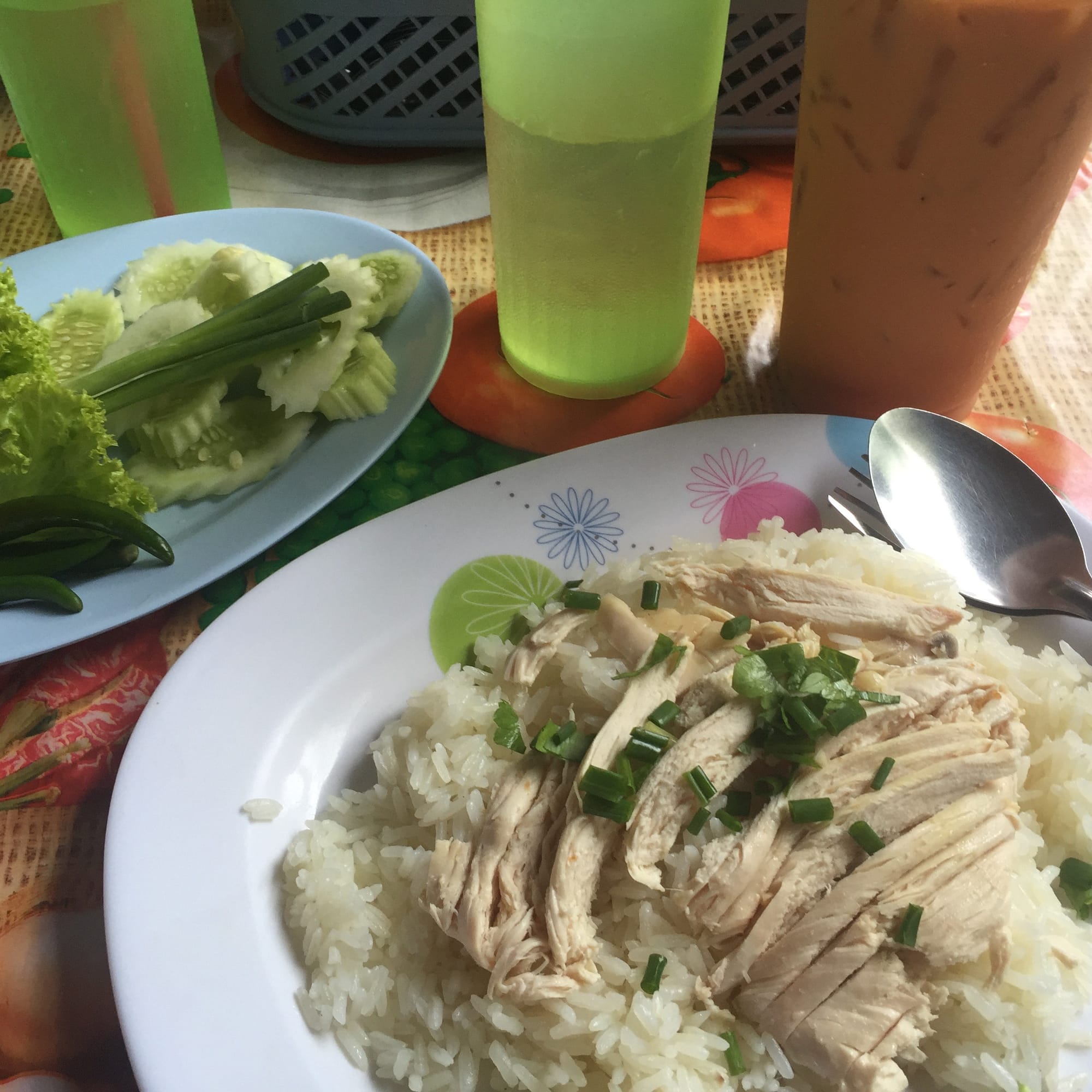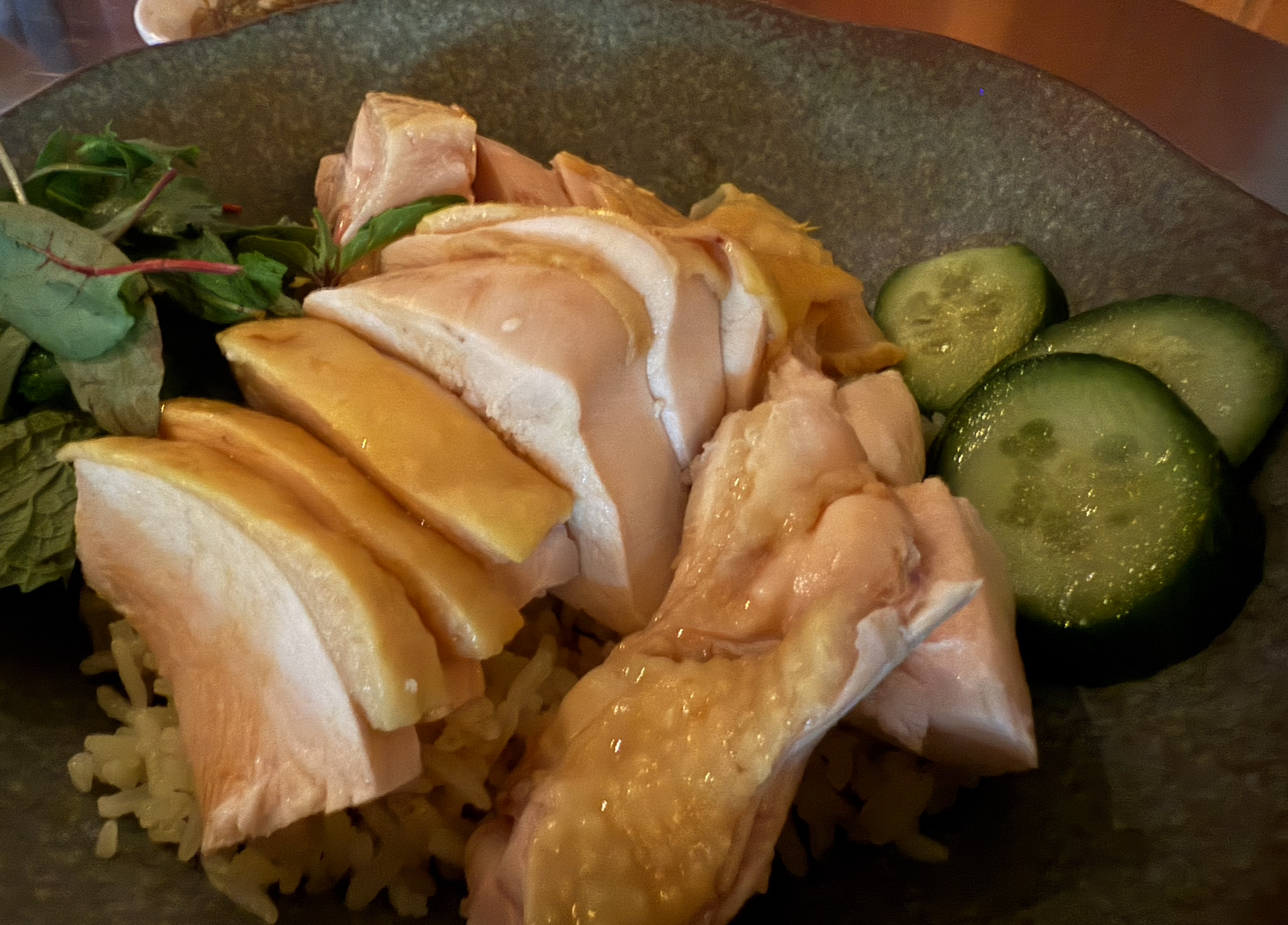Tracing migration through food

File SettingsDoneTitleDescriptionThumbnailWill be cropped to a 3:2 aspect ratioUploadDraft
Noodles and Window Seats
You may be very surprised to be receiving a newsletter from me right now. I’m 100% sure you've forgotten you signed up for this, four years ago, deep in the midst of COVID lockdowns. Yeah, me too.
In 2021, I assume everyone was in a very different place. I was still living in Asia, bouncing from work project to work project, but I had spent a lot of time thinking about how food is created and evolves from where cultures rub up against one another, often times unwillingly and with negative effects, but the culinary creations that result from these can also turn into some of the more beloved dishes and tastes that are in our collective memories.
I’m going to start looking at these, especially as I encounter them in my regular life. I’ve been lucky enough to spend my time in global cities such as Shanghai, Los Angeles, Hong Kong, Houston, Sydney, Melbourne, Vancouver, San Francisco and Oakland, Manila, Taipei, Singapore, Saigon, Tokyo and I want to really explore ideas and dishes and experiences which draw upon these locations and these foods.
Earlier in my life, I was a big stickler for “authenticity” - they don’t make it like this in Hong Kong, or Tokyo, Los Angeles or wherever - and if it’s not authentic, then its not really worth considering. And through a lot of learning and exposure and realizing “hey a lot of these meals didn’t exist 100 years ago, or 50 or they only came about because someone tried something new” and I started thinking about dishes as ‘traditional,’ but even then that was about an arbitrary moment in time more than anything else. Authenticity doesn’t exist, the right way to make something doesn’t exist, and good things come when cultures rub up against each other.
I wanted to return to my original newsletter when a couple of weeks ago, I went to a Malaysian restaurant in Historic Filipinotown here in Los Angeles, Rasarumah.
In an Eater Interview, Chef Johnny Lee talked about his inspiration for Rasarumah
While running Pearl River Deli, Lee began ruminating about Rasarumah during travels to Southeast Asia, especially in Malaysia and Singapore. The Dutch, Portuguese, and English have colonized the region. Malaysia also borders Singapore, and Lee found that the Malaysian population could often speak three or four languages, even Lee’s native Cantonese. “I was interested in seeing what Cantonese diaspora food looked like outside of China, especially in places like America,” explains Lee. “It was interesting seeing how the food changed as people immigrated to these other countries.”
Within this quote is really what I'm trying to explore with this newsletter, and Chef Lee had recently been making Hainan Chicken Rice from Chinatown's Pearl River Deli before starting Rasarumah, and this is where I want to start.
If one had travelled to Hainan, even through the 90s, you could have explored from Haikou to Sanya and would have had difficulty finding the island's signature dish, instead one would need to be in south east Asia amongst the disapora in Singapore, Malaysia, Thailand and Vietnam and locations abroad to really find it, with roots in Hainan's wenchang chicken dish, it took on a new identity from Hainan emigres in Singapore into Hainanese Chicken Rice.

I'm not much of an expert in either Hainan Chicken Rice, nor Southeast Asian migration patterns, but I'll pretend to be both. I've been obsessed with Hainan chicken since my first visit to Singapore in 1998, and since have tried to consume as much of the dish as possible. Poached chicken, served atop fluffy white chicken flavored rice, and traditionally served with a spicy sambal, a garlic and ginger dipping sauce and dark, sweet soy sauce, all of which are intended to be customized and mixed to your own personal taste. I once spent an entire 48 hour trip eating at 12 different recommended Hainan Chicken places in Singapore off places I had cribbed from the Makan Guide and Lonely Planet's Thorntree (reddit, tik tok and youtube did not exist yet!) In Bangkok, I combed back alleys looking for the best khao man gai stalls. The simple meal of poached chicken over rice became my white whale.

I am not intending for this newsletter to become a food review blog, something that I really don't possess the expertise, and more importantly, the taste for alcohol, to do properly. But this was, by a long way, the best hainan chicken rice I've ever had. Tender, luscious, extremely flavorful chicken, that recalled all of the best hawker stands, but also showed off Chef Lee's high end technique and background. I've spent much of the last 25 years finding both well-known and lesser known hainan chicken spots, and for me, this was the best one I've ever had. However, it was several multiple times the price of a hawker centre in Singapore or a cart in Bangkok, or even restaurants in California but you know it really deserves to be.

I often find when reading or hearing discussions about food that is normally thought of cheaper or street level, and then a restaurant or food provider transforms the dish with higher end technique or ingredients there are often arguments about why this dish, which is normally $2.50 Sing, or $3 USD, why are they charging $25 USD for this now, but when other food cultures elevate their formerly low level dishes (say, pasta, pizza or coq au vin or beef bourguignon, nobody blinks twice.
Ramarusah can be found at 3107 Beverly Blvd, Los Angeles, CA 90026, but the Hainan Chicken Rice is a special so stay tuned to their instagram announcements
With this newsletter, I want to continue to explore how food changes between diaspora and emigration patterns and where cultures meet and living in California, right on the edge of the Pacific Rim seems to be the perfect place to do that and finally get these posts that have been living in my head for the past four years onto some sort of digital paper. So stay tuned!